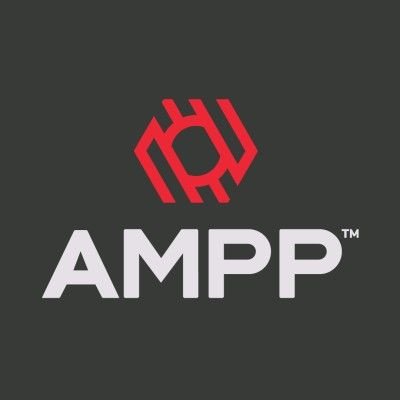THE ADVANTAGES OF GALVANIZING METALS VERSUS PAINTING
Steel structures are fortified by their finishing coat. Painting steel and galvanizing it are two tried and true methods to protect steel against rusting and ultimately deterioration.
Humans have been painting surfaces since prehistoric times, as evidenced by cave murals. Galvanizing is not quite so old. French engineer Stanislaus Tranquille Modeste Sorel applied for the first patent for a process he called galvanizing in 1836.
Galvanization is the practice of applying zinc coating to steel or iron as a protective measure to prevent corrosion. Hot-dip galvanizing is the most frequently used method. It involves dipping the metal into a bath of molten zinc, which gives it a shiny finish. Galvanized metal has a nice, clean aesthetic to it. Most storage bins that dot the pastoral landscape have that shiny, galvanized finish.
While galvanized metal has a shiny look, painted metal is not always shiny. Unlike galvanized metal, however, it can be painted in any color and that is part of its appeal. Some people prefer this coating because they want a certain color to match the rest of their equipment. If blue is their signature color, they want blue paint. Or maybe they want a logo applied and painting makes that possible. There are safety reasons as well. Ever wonder why antenna towers are painted aviation orange and white? The Federal Aviation Administration recommends these colors to help with plane navigation.
A fresh coat of paint brightens up metals and is aesthetically pleasing. While the coating looks good, it just doesn’t have the same life expectancy as a galvanized product. Steel structures that have been painted will have about 10 to 20 years, depending on the type of coating and the quality of the application, before they need a fresh coat. It is not uncommon for galvanized metal to last 70 years or more, depending on environmental exposures, according to the American Galvanizers Association.
The environment plays a big factor in how well the steel holds up. If for instance, you have equipment exposed to saltwater from the ocean, its life expectancy is much less than say the Midwest. Painted metals near the ocean have substantially shorter lifespans before a new coat of paint is needed. This is because the saltwater eats through the surface. Rust will appear much quicker on metals exposed to saltwater along the coastal regions.
Galvanized metal is more durable, but the upfront cost is more expensive than a painted coating. Galvanizing can cost about twice as much per pound as it would to paint the metal, depending on the paint specifications. However, repainting can get expensive if it needs to be done every 10 years, or sooner in some cases. Since galvanizing lasts longer, that means people can save money in the long run. Repainting can also be a hassle, especially trying to reach metal structures that are elevated like towers and catwalks. Painting such structures often require the services and expertise of a professional. Paying someone to do an aerial painting project every decade or so can add up. Operations are often required to be out of service to allow the painters to work safely, which cuts into production time.
Normally, products are hot-dipped galvanized in only a couple of days. Painting, depending on the location, type of system, and the number of coats can take several days. Painting can be done anywhere. The coats may be applied at the plant or on site of where the steel structure will be located. Hot-dipped galvanizing must be done at a galvanizing plant with a controlled environment. Cold galvanizing is used for touch ups once the structure is in the field and assembled.
The Standard ASTM A123/A123M covers six material categories: structural shapes, strip and bar, plat, pipe and tubing, wire, and reinforcing bar. It is the responsibility of the designer and fabricator to ensure the product has been designed and built properly before it is hot-dipped galvanized (1). If a customer has any special instructions, these should be given before the product is shipped to the galvanizing plant.
The ASTM A123/A123M requirements include coating thickness/weight, which is dependent upon material category and steel thickness. Another requirement is a continuous, smooth and uniform finish. The appearance of the hot-dipped galvanized metal should be free of uncoated areas, blisters, flux deposits, plus have no heavy zinc deposits that interfere with the product’s intended use. The entire coating should have a strong adherence throughout the service life of galvanized steel (1).
Powder coating is another finishing option that’s been around since the process was invented, patented and improved upon in the late 1940 and the 1950s. It is usually applied via a process called electrostatic spray deposition. A spray gun is used to apply an electrostatic charge to the powder particles, which are then attracted to the grounded part, according to the Powder Coating Institute. Once the coat is applied, the metal is cured in an oven. Powder coating has a lifespan that is halfway between galvanized and painting. It can also be damaged during the handling and erection phase of the project. Powder coating also does not come in a spray form to touch up nicks and scratches. Like with paint, powder coating can be done in any color under the rainbow.
Regardless of what method is used to provide a finished coating on the product, it is ultimately up to the individual customers to decide which one they want to purchase. Customers should weigh the pros and cons of each method before making their final decision.
1.“ASTM A123 for Structural Steel Products.” GalvanizeIt! Online Seminar. Web. 12, February 2018.
Copyright © 2024 Pittsburg Tank & Tower Group. All Rights Reserved















